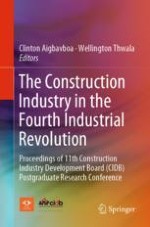2020 | OriginalPaper | Chapter
A Review of the Advantages and Disadvantages of the Use of Automation and Robotics in the Construction Industry
Authors : Josephine Llale, Matleko Setati, Success Mavunda, Thando Ndlovu, David Root, Paulin Wembe
Published in: The Construction Industry in the Fourth Industrial Revolution
Publisher: Springer International Publishing
Activate our intelligent search to find suitable subject content or patents.
Select sections of text to find matching patents with Artificial Intelligence. powered by
Select sections of text to find additional relevant content using AI-assisted search. powered by
